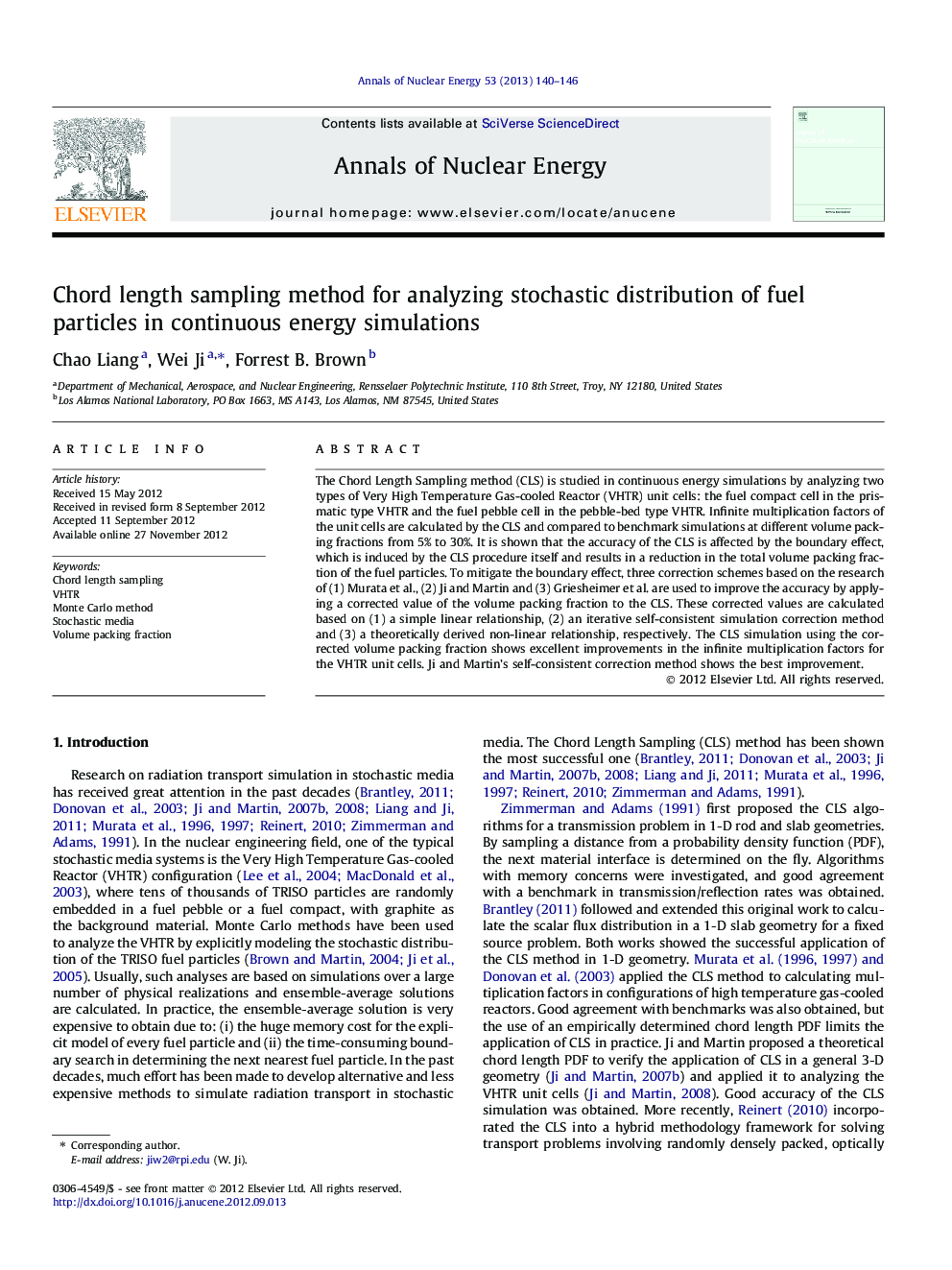| Article ID | Journal | Published Year | Pages | File Type |
|---|---|---|---|---|
| 1728754 | Annals of Nuclear Energy | 2013 | 7 Pages |
The Chord Length Sampling method (CLS) is studied in continuous energy simulations by analyzing two types of Very High Temperature Gas-cooled Reactor (VHTR) unit cells: the fuel compact cell in the prismatic type VHTR and the fuel pebble cell in the pebble-bed type VHTR. Infinite multiplication factors of the unit cells are calculated by the CLS and compared to benchmark simulations at different volume packing fractions from 5% to 30%. It is shown that the accuracy of the CLS is affected by the boundary effect, which is induced by the CLS procedure itself and results in a reduction in the total volume packing fraction of the fuel particles. To mitigate the boundary effect, three correction schemes based on the research of (1) Murata et al., (2) Ji and Martin and (3) Griesheimer et al. are used to improve the accuracy by applying a corrected value of the volume packing fraction to the CLS. These corrected values are calculated based on (1) a simple linear relationship, (2) an iterative self-consistent simulation correction method and (3) a theoretically derived non-linear relationship, respectively. The CLS simulation using the corrected volume packing fraction shows excellent improvements in the infinite multiplication factors for the VHTR unit cells. Ji and Martin’s self-consistent correction method shows the best improvement.
► Accuracy of chord length sampling in continuous energy simulations is analyzed. ► Boundary effect is shown to be a major factor affecting the CLS accuracy. ► Three strategies that mitigate the boundary effect are investigated. ► The best strategy is identified and assures high confidence in the application of CLS. ► CLS can analyze the stochastic distribution of fuel particles in VHTR with high fidelity.
